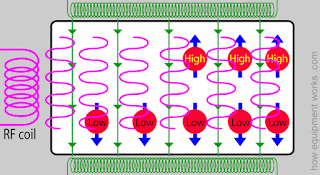Hi everyone and welcome to week 6 of SRP!
This week I spent more of my time with Dr. Silva interpreting images as opposed to sitting with the MR techs and watching the images being produced like I have been the last few weeks. I started of this week in the reading room watching the doctors go through scans and recording their observations about them. I was with them for about an hour before I realized they were interpreting CT scans and not MRI scans. CT’s are different from MRI’s because they take about a minute to scan the patient whereas MRI’s take around 30-45 minutes. Not only are they faster but they are much cheaper and more comfortable for the patient. However, CT scans are mostly useful for bone injuries while MRI’s are useful for soft tissue evaluation such as ligament and tendon injuries, brain tumors, and, pertinent to my project, prostate cancer.
In the CT scans I saw the doctors diagnosing, they were looking specifically for kidney stones. The stones appeared bright white on the scans since calcium shows up white. This is also why bone is very white in the CT scan below.
The tiny white circle indicates the kidney stone and many times the stones are so small they are not detected by the doctors.
After spending some time interpreting the CT scans, I moved on to researching more about the prostate itself since the answer to my research question is backed up with evidence regarding the prostate and prostate cancer. I learned that there are two main parts to the prostate that shows up on MR scans.
The central gland and peripheral zone are the two parts that are examined to see whether or not the patients has prostate cancer. As suggested by the name, the peripheral zone surrounds the central gland and is seen as bright white on the picture above. The cancer is mostly in the peripheral zone which is why the zone is so enlarged in the picture. On a cancer-free patient, a prostate MRI would look like in the image below.
Dr. Silva taught me that the appearance of the peripheral zone and central gland on certain MRI series and the brightness or darkness of certain areas is a big indicator of whether or the patient has cancer. However, sometimes there are false positives and in the case of false positives, doctors must rely on some scans more than other. I will go into this more next week and I hope to see you then!











